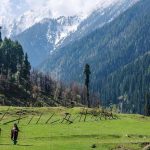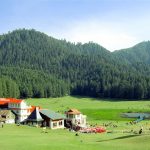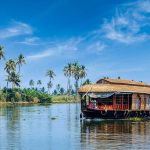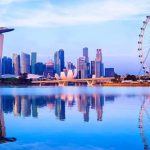Visit Mathura & Vrindavan
Lord Krishna
He is easily the most popular person here. Every square foot of Mathura-Vrindavan is wrapped in timeless devotion to Lord Krishna, the evergreen hero of Hinduism, the lover of Radha, the cowherd-prince and the re-incarnation of Lord Vishnu. Mathura without Lord Krishna is like Bethlehem without Christ. Welcome to Brajbhoomi or Krishna-land.
Brajbhoomi
The city of Mathura in Uttar Pradesh, the nucleus of Brajbhoomi, is located at a distance of 145 km south-east of Delhi and 58 km north-west of Agra. Covering an area of about 3,800 sq. km., today, Brajbhoomi can be divided into two distinct units – the eastern part in the trans-Yamuna tract with places like Gokul, Mahavan, Baldeo, Mat and Bajna and the western side of the Yamuna covering the Mathura region that encompasses Vrindavan, Govardhan, Kusum Sarovar, Barsana and Nandgaon. In a nutshell, the land of Braj starts from Kotban near Hodel about 95 km from Delhi and ends at Runakuta which is known specially for its association with the poet Surdas, an ardent Krishna devotee.
An Ancient City
An ancient city, Mathura’s strategic location at the cross roads of various trade routes – that went westwards to West Asia and the Roman Empire; northwards, via Taxila, Pushkalavati and Purushapur to Central Asia and the Silk Route and eastwards to China – ensured its position as a centre of trade and a meeting point for varied cultures. By the 5th century BC, during the time of Buddha, it was a major metropolis and the capital of the Surasena Kingdom. Mathura saw its `golden age’ during the rule of the Kushanas and the able governance of rulers Kanishka, Huvishka, and Vasishka, when the arts flourished and economic wealth grew. It remained a centre of power during the Mauryan period, through the enlightened rule of Emperor Ashoka (3rd century BC) to the Gupta era (4th century AD).
Holy Land
It has often been said that it is easier to count the number of dust particles on the surface of the earth than to count the number of holy places in Mathura. Each of the Ghats, for instance, has its own Krishna myth. Here He rested after killing his evil and tyrannical uncle, King Kansa; This is where His mother tied him after he stole butter; This is the sacred grove where Krishna and Radha spent lazy, love-filled times – the list is endless. In Mathura-Vrindavan, it is difficult to know the dividing line between reality and myth.
Vrindavan – The City Of Temples
Vrindavan, around 15 km from Mathura, is a major place of pilgrimage, on the banks of Yamuna. Attracting about 5 lakhs pilgrims every year, it is noted for its numerous temples- both old and modern. Vrindavan is synonymous with the innocent mirth and child like playfulness of Shri Krishna. Vrindavan, the dusty little town known for the temples, big and small, famous and remote strewn all over the place.
A Divine Career
Lord Krishna was born in a prison cell in Mathura. His father Vasudev aided by several celestial forces stole him out of Mathura, across the raging river Yamuna and into the house of Nand in Gokul. Krishna spent his early childhood here and revealed the first signs of his divinity. His uncle Kansa’s muderous attempts forced Krishna to leave Gokul and move to Nandgaon, a more secure home high up on a hill. From here, the adolescent Krishna, the cowherd, would wander into the Vrindavan forests to play with his friends and dally with Radha, his lady love. Vrindavan, is still a transcendental world, a place of Krishna’s leela, (play), of deep eroticism and an archetypal connection to nature. Each tree in the area speaks, as it were, of the love of the divine couple.







